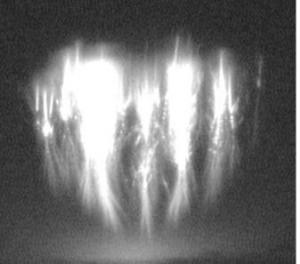
© Tom GreevesThe Cut Hill stones were placed around the same time as Stonehenge
Littered across the hills of Dartmoor in Devon, southern England, around 80 rows and circles of stones stand sentinel in the wild landscape. Now, striking similarities between one of these monuments and Stonehenge, 180 kilometres to the east, suggest they may be the work of the same people.
The row of nine stones on Cut Hill was discovered in 2004 on one of the highest, most remote hills of Dartmoor national park. "It is on easily the most spectacular hill on north Dartmoor," says Andrew Fleming, president of the Devon Archaeological Society. "If you were looking for a distant shrine in the centre of the north moor, that's where you would put it."
Ralph Fyfe of the University of Plymouth and independent archaeologist Tom Greeves have now carbon-dated the peat surrounding the stones. This suggests that at least one of the stones had fallen - or been placed flat on the ground - by between 3600 and 3440 BC, and another by 3350 to 3100 BC (
Antiquity, vol 84, p 55).
That comes as a surprise to archaeologists, who, on the strength of artefacts found nearby, had assumed that Dartmoor monuments like Cut Hill and Stall Moor (pictured) dated from the Bronze Age, around 2100 to 1600 BC. Instead, Fyfe suggests that Cut Hill is from the Neolithic period, the same period that Stonehenge was built.


